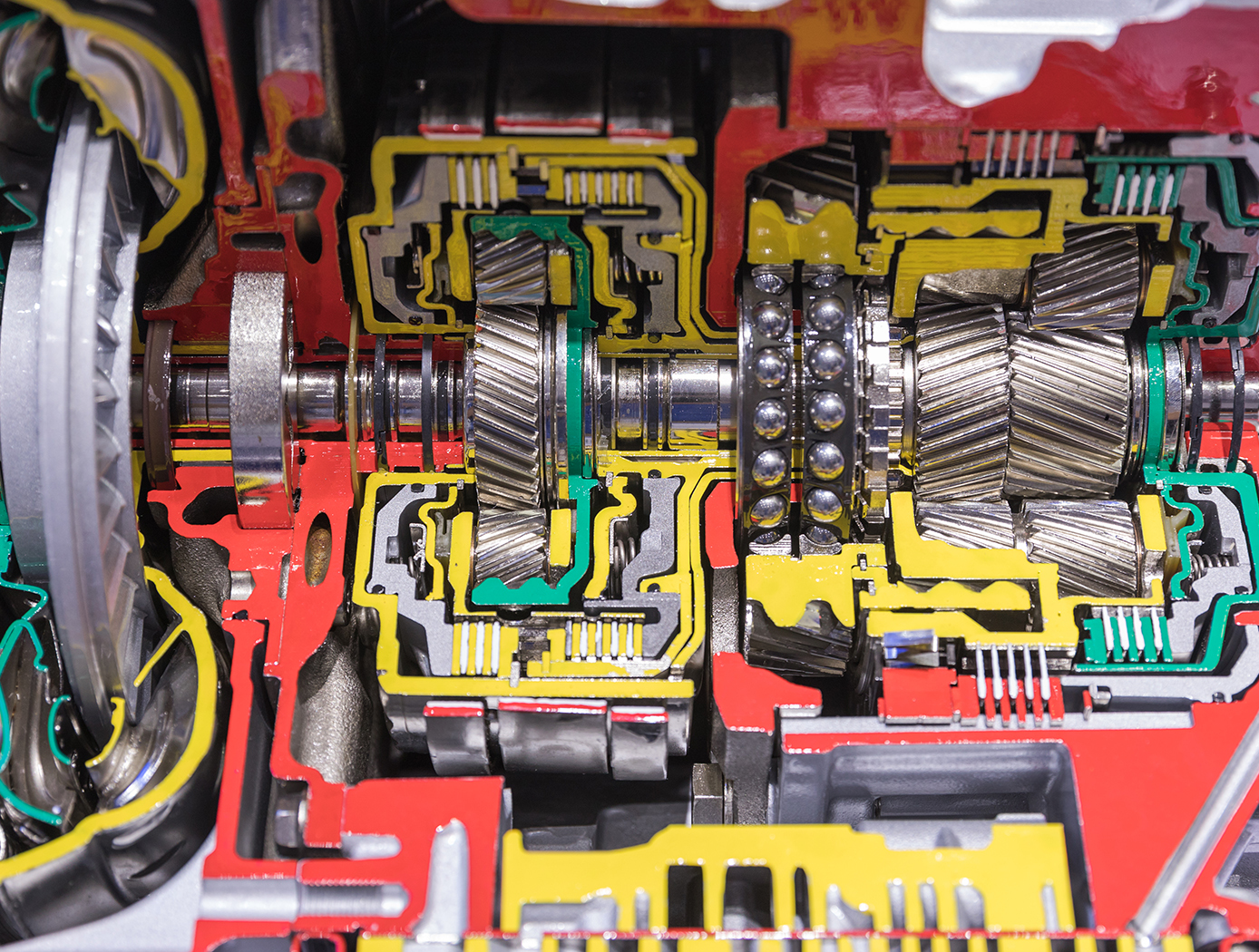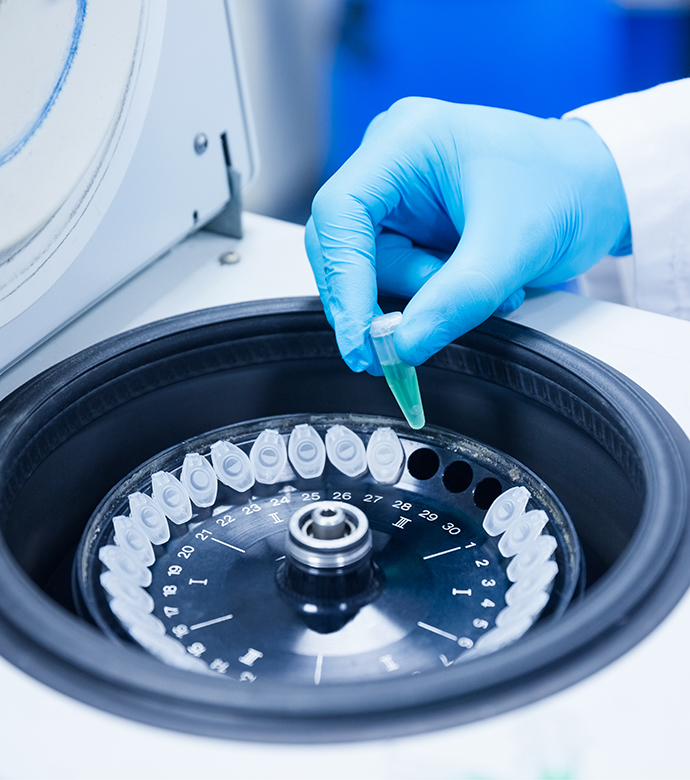NiTi Alloy Ball Bearings
mechanical and fluid systems
NiTi Alloy Ball Bearings (LEW-TOPS-129)
Small, high-grade bearings are extremely hard and corrosion-resistant
Overview
Innovators at NASA's Glenn Research Center have developed a new method for making small diameter, high-grade Nickel Titanium (NiTi) ball bearings that set a new standard for precision performance in the bearing field. Using non-corrosive NiTi alloy instead of steel is an inexpensive way to increase the load capability and reduce the weight of a ball bearing. It has been difficult, however, to produce balls less than 0.375" in diameter using the standard baseline 60NiTi alloy. To address this challenge, Glenn innovators have created a new, more advanced alloy consisting of NiTi and Hafnium (Hf) that can produce high-quality ball bearings of any size, but most notably less than 0.25" in diameter. Glenn's NiTi-Hf ball bearings are superior to any previously used alloy or steel. They are corrosion-resistant, shockproof, and have been rated at a grade 10 or higher on the Annular Bearing Engineering Committee (ABEC) scale (an industry-accepted tolerance standard for bearings). Thanks to their high strength and Rockwell hardness (HRC 58-60), these customizable ball bearings will facilitate new high-speed precision applications in a broad range of industries, including aerospace, automotive, industrial, medical, and more.
The Technology
For the very first time, NASA Glenn has successfully produced large quantities of high-grade ball bearings that are less than 0.25" in diameter thanks to the development of a new alloy made of 57.6% Ni, 39.2% Ti and 3.2% Hf. Smaller, shockproof balls improve load capability in conventional steel races, aircraft control surface joints, actuator gearboxes, and more. The production of standard NiTi alloy ball bearings that are smaller than 0.375" in diameter has proven challenging for multiple reasons, the primary being that small parts made from NiTi alloys cool excessively before they can be quenched (an important step in attaining high hardness). NiTi-Hf alloy, on the other hand, does not require such high-rate quenching to achieve high hardness. Consequently, the production of small, extremely durable NiTi ball bearings is now a reality.
The powder metallurgy process by which these high-quality NiTi-Hf ball bearings are manufactured combines many new techniques with several existing ones. First, a high-purity NiTi-Hf powder is created through an atomization process and transformed into long, cylindrical rods through hot isostatic pressing. The rods are then cut into cylinders and machined into spheres somewhat larger than the desired finished ball size. Finally, the spheres are hardened through heat treatment and polished until the desired finished size diameter and surface finish (typically 1 micro-inch root mean square roughness) is achieved. The result is a non-corrosive, very hard, highly elastic yet remarkably strong ball bearing with unbridled potential.


Benefits
- High Strength: Utilizes a shockproof alloy that can withstand tremendous loads and stresses without denting or other permanent deformation
- High Hardness: Achieves a Rockwell hardness of HRC 58-60 enabling longer life and faster rotations
- High Quality: Rated at a grade 10 or higher on the ABEC scale
- Corrosion-resistant: Fabricated using a non-magnetic alloy containing no iron, and therefore cannot rust
- Lightweight: Weighs 15-20% less than conventional steel ball bearings
Applications
- Aerospace (engines, actuators, and joints)
- Automotive
- Marine
- Military
- Electronics
- Power
- Valves
- Industrial machinery
- Biomedical (x-ray machines, surgical instruments, medical testing equipment)
- High performance sports (automobile racing, biking)
- Mechanical systems
Technology Details
mechanical and fluid systems
LEW-TOPS-129
LEW-19725-1
LEW-19725-2
See also LEW-TOPS-144 "High-Strength Superelastic Compounds"
DataSheet_LEW-TOPS-129
|
Related Links:
|
Similar Results

High-Strength Superelastic Compounds
60NiTi, which contains 60% nickel and 40% titanium, is a superelastic intermetallic material for use in bearings, gears, and other mechanical systems. When properly processed, 60NiTi is hard, lightweight, electrically conductive, highly corrosion resistant, readily machined prior to final heat treatment, non-galling, and non-magnetic.
60NiTi was previously considered difficult to machine, partly because of issues with residual stresses and quench cracking. Modern ceramic processing methods, co-developed by NASA Glenn, now enable 60NiTi bearings to be easily manufactured. In addition, a method is available for pre-stressing the materials to increase their durability.
Bearing-grade 60NiTi is manufactured via a patented, high-temperature powder metallurgy (PM) process. Pre-alloyed 60NiTi powder is hot isostatic pressed (HIPed) into various shapes and sizes depending upon the desired end product. To make 60NiTi balls, the powder is HIPed into rough, spherical ball blanks that are then ground, polished, and lapped. Because the PM process yields ball blanks that have isotropic mechanical properties, high-quality (Grade 5) ball bearings can be readily produced. The finished 60NiTi balls are bright and shiny in appearance and resemble conventional polished steel balls. The manufacture of 60NiTi balls is a fully commercialized process, and many standard ball sizes are available. The material can also be shaped into other metallic components, such as gears, sliding bearings, actuators, and drives.

High-Temperature Ni-Based Superalloy Composition
NASA's new Ni-based superalloy uses a powder metallurgy (PM) composition that inhibits the deleterious gamma-prime to gamma-phase transformation along stacking faults during high temperature creep deformation. Ni-base superalloys have excellent high temperature properties, mostly due to the presence of coherent precipitates. At higher temperatures, these precipitates are defeated by the diffusional shear dislocations producing intrinsic and extrinsic faults. Recent studies have found that, during deformation of turbine disk alloys at high temperature, Co, Cr, and Mo segregate to these faults (removing Ni and Al) inside the strengthening precipitates of these alloys. This represents a local phase transformation from the strengthening precipitate to the weaker matrix phase. Therefore, this elemental segregation significantly weakens the ability of a precipitate to withstand further deformation, producing faster strain rates in the alloy at higher temperatures. This invention presents a solution to prevent this type of segregation along these two faults to improve the creep properties of turbine disks and similar Ni-based alloys. By alloying a specific amount of eta phase formers (Ti, Ta, Nb, and Hf), the phase transformation to can be eliminated along 2-layer extrinsic stacking faults (SESFs) in precipitates without precipitating bulk eta phase. Also, by adding a certain amount of D019 formers (Mo and W), the phase transformation to can be mitigated along 1-layer intrinsic stacking faults (SISFs) without producing bulk sigma phase. This alloy composition incorporates both strengthening methods for use in jet turbine disks, though the composition has applications in other high-stress and/or high-temperature environments as are found in power plants, space launch systems, and other critical structural applications.

Precipitation Strengthened
Ni-Ti-Pd Shape Memory Alloys
Shape memory alloys (SMAs) are metals that can return to their original shape following thermal input and are largely used as actuators for various applications across industries including space, aeronautics, automotive, and biomedical. These alloys can require long processing times to stabilize through repeated training cycles and suffer from loss of strength and stability during use. Precipitation strengthening (using heat treatments to grow small nanoscale regions of distinct metal phases within the base alloy) is one way to mitigate these issues.
The NASA inventors have combined a modification of typical NiTi compositions by introducing Palladium (Pd) and small amounts of other metals and specific heat treatments to produce a novel SMA with improved properties. Specifically, the alloy is inherently stable, reducing both the need for extended processing times to stabilize the metal and the possibility of failure during high numbers of actuation cycles. Further, the SMA is specifically designed to have significantly lower hysteresis (the temperature difference between the heating and cooling) than current state of the art SMAs, i.e., at or below 10°C compared to 20°C or above. These properties combine for a SMA with enhanced properties usable across various industries and applications for reliable actuation.
The related patent is now available to license. Please note that NASA does not manufacturer products itself for commercial sale.

Ultrasonic Stir Welding
Ultrasonic Stir Welding is a solid state stir welding process, meaning that the weld work piece does not melt during the welding process. The process uses a stir rod to stir the plasticized abutting surfaces of two pieces of metallic alloy that forms the weld joint. Heating is done using a specially designed induction coil. The control system has the capability to pulse the high-power ultrasonic (HPU) energy of the stir rod on and off at different rates from 1-second pulses to 60-millisecond pulses. This pulsing capability allows the stir rod to act as a mechanical device (moving and stirring plasticized nugget material) when the HPU energy is off, and allowing the energized stir rod to transfer HPU energy into the weld nugget (to reduce forces, increase stir rod life, etc.) when the HPU energy is on. The process can be used to join high-melting-temperature alloys such as titanium, Inconel, and steel.

Economical, On-Demand GRCop Alloy Production
In-situ alloyed, additively manufactured GRCop components are produced by mixing elemental copper, chromium, and niobium powders and then selectively laser melting the powder mixture using powder bed fusion additive manufacturing. During laser melting, the chromium and niobium powders react to form Cr2Nb precipitates in the molten state, which are then dispersed in the pure copper matrix upon solidification. This dispersed precipitate phase is encapsulated within the pure copper matrix upon solidification, resulting in the characteristic microstructure of GRCop alloys with high thermal conductivity from the copper combined with superior mechanical properties from the precipitates. Optimization of process parameters like laser power has enabled up to 89% conversion of the constituent elements into Cr2Nb precipitates. The achieved rapid cooling rates of ~10^4-10^6 K/s enable formation of fine Cr2Nb precipitates around 0.1-1 micrometers in size. The technology is currently at a TRL 4, and NASA has developed and tested coupons of material using the new process. The related patent is now available to license. Please note that NASA does not manufacturer products itself for commercial sale.



